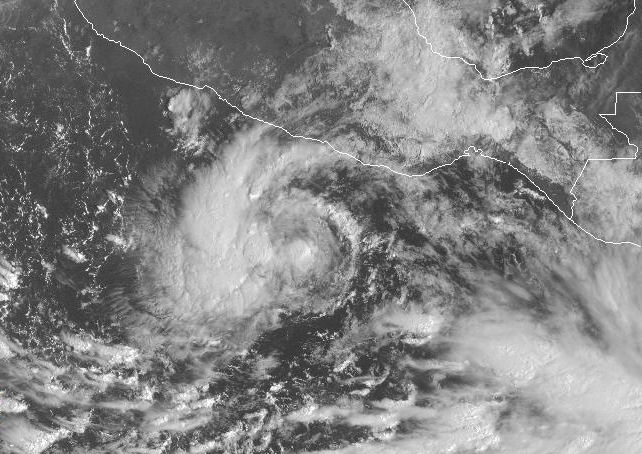|
Hurricane Norbert
The name Norbert has been used for five tropical cyclones in the Eastern Pacific Ocean: * Hurricane Norbert (1984) – took an erratic track several hundred miles south of Baja California, making landfall there * Hurricane Norbert (1990) – stayed at sea * Hurricane Norbert (2008) – struck Baja California * Hurricane Norbert (2014) – a Category 3 that affected Western Mexico and the Baja California Peninsula * Tropical Storm Norbert (2020) The 2020 Pacific hurricane season was the least active Pacific hurricane season since 2011. The season was near average in terms of tropical storms, featuring a total of 17, but had a well below average number of hurricanes and major hurricanes, ... – never threatened land {{DEFAULTSORT:Norbert Pacific hurricane set index articles ... [...More Info...] [...Related Items...] OR: [Wikipedia] [Google] [Baidu] |
Hurricane Norbert (2008)
Hurricane Norbert is tied with Hurricane Jimena (2009), Hurricane Jimena as the strongest tropical cyclone to strike the west coast of Baja California Sur in recorded history. The fifteenth named storm, seventh hurricane, and second major hurricane of the 2008 Pacific hurricane season, 2008 hurricane season, Norbert originated as a tropical depression from a tropical wave south of Acapulco on October 3. Strong wind shear initially prevented much development, but the cyclone encountered a more favorable environment as it moved westward. On October 5, the National Hurricane Center (NHC) upgraded the depression to Tropical Storm Norbert, and the system intensified further to attain hurricane intensity by October 6. After undergoing a period of rapid deepening, Norbert reached its peak intensity as a Category 4 on the Saffir–Simpson hurricane wind scale, with maximum sustained winds of and a minimum atmospheric pressure, barometric pressure of . As the cyclone rou ... [...More Info...] [...Related Items...] OR: [Wikipedia] [Google] [Baidu] |
Hurricane Norbert (1984)
Hurricane Norbert marked the first time a core of a hurricane was fully mapped in three-dimensions. First forming on September 14, 1984 west of the Mexican coast, Norbert gradually intensified, reaching hurricane intensity two days after formation. On September 22, Norbert peaked in strength as a Category 4 hurricane on the Saffir-Simpson Hurricane Scale. While intensifying, Norbert meandered. It moved east, then north, then west, then south, then back towards the east, and finally towards the northeast. After fluctuating in intensity for two more days, Norbert rapidly weakened. It turned towards the northwest and made landfall in southern Baja California Norte as a tropical storm. The combination of Norbert and several other storms left thousands homeless throughout Mexico. The remnants of Hurricane Norbert produced moderate rain over Arizona. Meteorological history A tropical depression first developed on September 14 over the Pacific Ocean west of the Mexican coast. Six hour ... [...More Info...] [...Related Items...] OR: [Wikipedia] [Google] [Baidu] |
Hurricane Norbert (1990)
The 1990 Pacific hurricane season was a very active season which observed 21 named storms within the basin. The season also produced the fourth highest ACE index value on record. The season was officially started on May 15 in the eastern Pacific, and on June 1 in the central Pacific, and lasted until November 30. These dates conventionally delimit the period of each year when most tropical cyclones form in the northeastern Pacific Ocean. However, the formation of tropical cyclones is possible at any time of the year, as illustrated in 1990 by the formation of the season's first named storm, Hurricane Alma, on May 12. At the time, this was the earliest formation of a tropical storm on record in the eastern Pacific Overall, the impact of this season was minimal. Tropical Storm Rachel made two landfalls in Mexico and brought rain to the United States. Hurricane Boris brought light showers to California. Seasonal summary The 1990 eastern North Pacific hurricane season was a ... [...More Info...] [...Related Items...] OR: [Wikipedia] [Google] [Baidu] |
Hurricane Norbert (2014)
Hurricane Norbert produced a 1-in-1,000 year rainfall event in Arizona in early September 2014. The fifteenth named storm, tenth hurricane, and seventh major hurricane of the 2014 Pacific hurricane season, Norbert originated from an area of disturbed weather in association with an area of low pressure on September 2. Tracking generally northwestward, the newly designated tropical storm steadily organized in a moderate shear environment. Norbert attained hurricane intensity early on September 4 and Category 2 hurricane strength the next afternoon. Thereafter, the cyclone began a period of rapid deepening, and it subsequently attained its peak intensity with winds of and a minimum pressure of early on September 6. A track over progressively cooler waters and into a more stable environment prompted a weakening trend after peak intensity, and by early on September 8, the system no longer maintained enough convection to be considered a tropical cyclon ... [...More Info...] [...Related Items...] OR: [Wikipedia] [Google] [Baidu] |
Tropical Storm Norbert (2020)
The 2020 Pacific hurricane season was the least active Pacific hurricane season since 2011. The season was near average in terms of tropical storms, featuring a total of 17, but had a well below average number of hurricanes and major hurricanes, with only 4 hurricanes and 3 major hurricanes forming including one unnamed tropical storm which was operationally classified as a tropical depression, the first such occurrence since 2001. Despite this, it featured the earliest start to a season east of 140°W on record, with Tropical Depression One-E forming on April 25. The season officially began on May 15 in the East Pacific Ocean, and on June 1 in the Central Pacific and they both ended on November 30. These dates conventionally delimit the period of each year when most tropical cyclones form in the Pacific basin. However, the formation of tropical cyclones is possible at any time of the year, as shown by the record-early formation of Tropical Depression One-E. Th ... [...More Info...] [...Related Items...] OR: [Wikipedia] [Google] [Baidu] |

.jpg)
